Test Bank for The Psychologist as Detective: An Introduction to Conducting Research in Psychology 6th Edition
$35.00
Test Bank for The Psychologist as Detective: An Introduction to Conducting Research in Psychology 6th Edition
CHAPTER 1: PSYCHOLOGICAL RESEARCH AND THE RESEARCH METHODS COURSE
Activities/Assignments
Scientific Thinking. Hatcher (2000) presents an activity to introduce scientific thinking, perhaps as an icebreaker on the first day of class. Students are given a riddle and can ask yes/no questions until they come up with the right solution. Hatcher points out the similarities between solving riddles and scientific thinking (e.g., “Persistence is a key quality in problem solving,” “By expecting complicated answers, simple ones may be overlooked,” p. 123). Hatcher reports that students enjoy the exercise and that it works well as an icebreaker activity.
Hatcher, J. W. (1990). Using riddles to introduce the process and experience of scientific thinking. Teaching of Psychology, 17, 123-124.
The Research Process: An Overview. Wilson and Hershey (1996) describe an activity designed to help students discover that they know more about the research process than they may think they do. Students are given a sheet of paper with the phrase “Get idea for project” at the top and “Publish the research paper” at the bottom. Students are to fill in any activities that they think occur between these two steps. Their answers are then compared to the answers provided by 49 psychology professors. I’ve found that this activity works nicely as a first-day icebreaker – students can work in small groups and thus meet some of their classmates.
Wilson, T. L., & Hershey, D. A. (1996). The research methods script. Teaching of Psychology, 23, 97-99.
The Research Process for an Original Research Project. It’s often instructive for students themselves to go through the components of the research process as seen in Table 1-2 (p. 4). Students can go through the first 4-5 components (Problem, Literature Review, Theoretical Considerations, Hypothesis, and Research Design) for a topic of interest to them (see handout entitled The Research Process for an Original Research Project).
Becoming a Knowledgeable Consumer of Research. Connor-Greene (1993) describes an interesting activity designed to help students think critically about popular press articles that depict psychological research. During class in small groups, students read a short USA Today article on biological differences between homosexual and heterosexual men (the article is conveniently reprinted in the Appendix of Connor-Greene’s article). Students answer six questions and then view excerpts of the research article from which the USA Today article is based. An individual assignment is also discussed; students themselves can find a popular press article describing research and then compare to the original research report.
Connor-Greene, P. A. (1993). From the laboratory to the headlines: Teaching critical evaluation of press reports of research. Teaching of Psychology, 20, 167-169.
Article Review. Each chapter in this Instructor’s Manual contains an “Article Review” in which students read an empirical journal article and answer questions. The articles have been chosen based on several factors. First, each article should be easily comprehended by students. Many of the articles are older, in part because older articles tend to have somewhat simpler methodologies (only one or two independent variables, only one study presented, etc.). Second, each article should be interesting to students. Topics include, for example, sexual attraction, helping behavior, and attitudes toward gay men and lesbians. Third, each article should be related to the chapter topic. For example, in the ethics chapter (Chapter 2), students will read an article containing deception. In the survey chapter (Chapter 4), students will read an article containing a telephone survey. Fourth, each article should be related not only to the chapter in which it is presented, but also to past and future chapters. For example, many of the studies contain deception so that instructors can revisit ethics throughout the course. Many of the questions for each article review reference material from past chapters, so if you cover chapters out of order, be aware that you may need to modify this activity accordingly.
Students need to have access to the full text of the articles in order to answer the questions, so instructors could either make the articles available (e.g., on Reserve at the library) or have students find the articles themselves at their library (this may not be feasible if students need to use Interlibrary Loan).
The article for Chapter 1 is on handshakes and how aspects of the handshake (e.g., strength, vigor) relate to gender, personality, and first impressions.
The questions for this Article Review focus primarily on the components of the research process (see Table 1-2 on p. 4). There is some deception in this study, so it could be used in Chapter 2 as well. In addition, a correlational research design is used, so this article could be used in Chapter 4.
Chaplin, W. F., Phillips, J. B., Brown, J. D., Clanton, N. R., & Stein, J. L. (2000). Handshaking, gender, personality, and first impressions. Journal of Personality and Social Psychology, 79, 110-117.
Discovering Psychology: Understanding Research. This program provides an overview of the research process and is available free online at http://www.learner.org/resources/series138.html.
The Research Process for an Original Research Project
Each question below refers to one of the components of the research process as described in Table 1-2 (p. 4) of your book. Try to come up with a research topic and study of interest to you and answer the following questions.
- Problem: Briefly describe the problem. In other words, what are you interested in studying?
- Literature Review: Briefly describe some empirical research pertaining to your topic.
- Theoretical Considerations: What theory or theories are relevant to this research?
- Hypothesis: What is your hypothesis?
- Research Design: Briefly describe the research design. For example, how many participants do you anticipate being in your study? What will those participants do as part of their participation?
Chapter 1: Psychological Research and the Research Methods Course
Article Review
Each question below refers to one of the components of the research process as described in Table 1-2 (p. 4) of your book. Use the following journal article to answer each question.
Chaplin, W. F., Phillips, J. B., Brown, J. D., Clanton, N. R., & Stein, J. L. (2000). Handshaking, gender, personality, and first impressions. Journal of Personality and Social Psychology, 79, 110-117.
Try not to get discouraged by the technical writing of research reports; remember, reading APA format articles gets easier the more often you do it!
- Problem: Briefly describe the problem under investigation. In other words, what were the researchers interested in studying?
ANSWER: The authors were interested in examining (a) gender differences in handshaking, (b) how personality characteristics are related to handshaking, and (c) how handshakes are related to first impressions.
- Literature Review: Briefly describe some of the research reviewed in the introduction.
ANSWER: The authors reviewed research on (a) characteristics of handshakes, such as strength and duration; (b) handshaking and personality (e.g., that the strength of a handshake is positively correlated with dominance); and (c) handshakes and first impressions, noting that no empirical studies have been conducted in this area.
- Theoretical Considerations: What theory or theories guided this research (if any)?
ANSWER: No specific theories were mentioned.
- Hypothesis: What was the hypothesis or hypotheses? (Note: There were several hypotheses related to gender, personality, and first impressions)
ANSWER: They hypothesized that (a) “good” handshakes would be associated with sociability, friendliness, and dominance; (b) “bad” handshakes would be associated with social introversion, shyness, and neuroticism; (c) women’s handshakes, compared to men’s, would be less vigorous, less strong, have a lighter grip, and be shorter in duration; (d) men’s handshakes would have a rougher texture than women’s; (e) women would maintain more eye contact during the handshake than men; (f) there would be no gender differences regarding the dryness or temperature of the handshakes; (g) handshakes that were stronger, longer, warmer, drier, more vigorous, with a more complete grip, and with more eye contact would be associated with a more favorable first impression.
- Research Design: Briefly describe the research design. For example, how many participants were in the study? What did those participants do as part of their participation?
ANSWER: There were 48 men and 64 women who participated in the study. The participants were told that they were a part of a study in which the researchers were interested in examining whether people complete surveys differently if they do them all together or if they do them separately. The students were told that they were in the condition where they had to fill out of the surveys separately. “To emphasize the separateness, each experimenter will greet you as though you were coming to them for an individual experiment. So, they will introduce themselves, shake your hand….” (p. 113).
Each participant completed four different personality questionnaires with four different experimenters. The participants shook hands with each experimenter at both the beginning and end of the session, and each experimenter rated the handshakes on a number of dimensions (e.g., strength, dryness).
- Data Analysis and Statistical Decisions: Briefly describe the main results of the study. (Hint: If you are having trouble understanding the Results section, read the beginning of the Discussion section or the Abstract for a synopsis).
ANSWER: (a) Men’s handshakes were firmer than women’s handshakes; (b) People with firm handshakes were more extraverted, less shy, and less neurotic compared to those with less firm handshakes; (c) women with a firm handshake were more open to new experiences compared to women with a less firm handshake; (d) people with a firm handshake made a better first impression than those without a firm handshake.
- Decisions in Terms of Past Research and Theory: Was the hypothesis supported? How do these results fit in with past research?
ANSWER: In general, the hypotheses were supported. The results are consistent with past literature on etiquette and business (related to the importance of having a firm handshake). Chaplin et al. related their results back to research on the relationship between personality and behavior, behavior and impression formation, and gender issues.
- Finding a New Problem: Did the authors of this study suggest new research based on these results? Explain.
ANSWER: The authors suggest that future researchers should incorporate handshaking into their research on behavior and personality (because handshaking is related to personality, as evidenced in this study).
Test Bank
Multiple Choice
- According to the textbook, psychologists utilize many different research designs to answer the diverse questions that they pose. Which of the following is NOT one of the research designs used by psychologists?
- Ex post facto studies
- Experiments
- Qualitative research studies
- All of the above are used by psychologists.
ANSWER: d (p. 3)
- The first step in the research process is to
- review the literature on your topic.
- develop a research plan.
- find a problem or question to examine.
- consider the relevant theories.
ANSWER: c (p. 4)
- A formal statement of the relation among the variables or factors of interest in a particular research area is a(n)
- hypothesis.
- research plan.
- theory.
- experiment.
ANSWER: c (p. 5)
- A theory is designed to
- organize existing scientific data.
- guide new research.
- Both (a) and (b).
- None of the above.
ANSWER: c (p. 5)
- “Students who have been given extra credit will report more satisfaction with their course than students who have not been given extra credit.” This statement best represents a(n)
- theory.
- hypothesis.
- extraneous variable.
- problem.
ANSWER: b (p. 6)
- Janell has discovered in her literature review that people often learn by imitation and observation (termed social learning). For example, when children see an adult behave violently toward a doll, they often imitate this violent behavior. Janell decides to do a study in which children who are initially afraid of snakes either view an adult playing with a snake or view nothing at all. She thinks that the children who view an adult playing with a snake will be more likely to later pet a snake than children who view nothing at all. Which of the following statements best represents the hypothesis?
- “Social learning refers to the idea that people often learn by imitation and observation.”
- “Children who view an adult playing with a snake will be more likely to later pet a snake than children who view nothing at all.”
- “Past research has found that when children see an adult behave violently toward a doll, they often imitate the violent behavior.”
- All of the above can be considered hypotheses.
ANSWER: b (p. 6)
- The experimenter’s predicted outcome of a research project is the
- research hypothesis.
- research theory.
- research design.
- research report.
ANSWER: a (p. 6)
- Which of the following components of the research process should be conducted first?
- conducting the project
- literature review
- coming up with the hypothesis
- analysis of research findings
ANSWER: b (p. 4)
- The general plan for selecting participants, assigning participants to experimental conditions, controlling extraneous variables, and gathering data is known as the
- hypothesis.
- theory.
- research design.
- literature review.
ANSWER: c (p. 6)
- A “literature review” refers to
- researchers reviewing their writing before publishing it in a professional journal.
- researchers reviewing their presentation before presenting it at a professional society meeting.
- consulting previous research on a topic.
- None of the above.
ANSWER: c (p. 4)
- Which of the following steps in the research process will often result in doing statistics?
- analysis of research findings
- decisions in terms of past research and theory
- theoretical considerations
- literature review
ANSWER: a (p. 7)
- Which of the following steps in the research process occurs AFTER the data are collected?
- formulate the hypothesis
- conduct a literature review
- make decisions in terms of past research and theory
- consider theories relevant to your project
ANSWER: c (p. 7)
- Which of the following is a reason given in your textbook for why the Research Methods course is important?
- A course in research methods can help with other psychology courses.
- A course in research methods can help with research that students may conduct in their post-graduation jobs.
- A course in research methods can help students become more savvy consumers of research.
- All of above.
ANSWER: d (pp. 11-12)
Short Answer/Essay
- What are the two basic properties of all theories?
- Distinguish between a theory and a hypothesis.
- Briefly describe the steps involved in the research process.
- Describe several advantages associated with taking a Research Methods course.

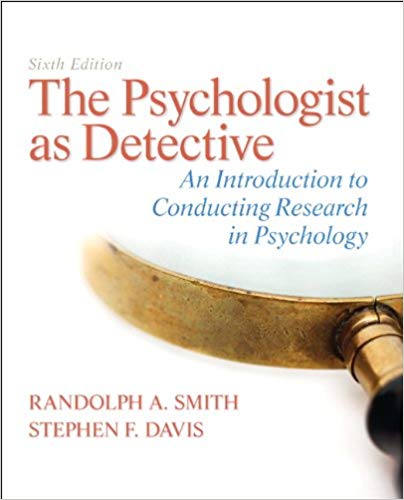



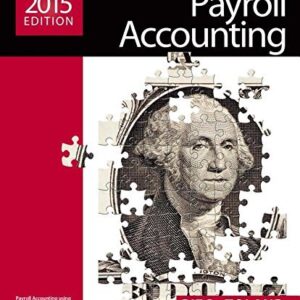

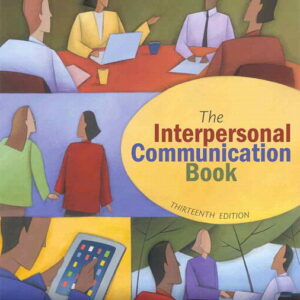
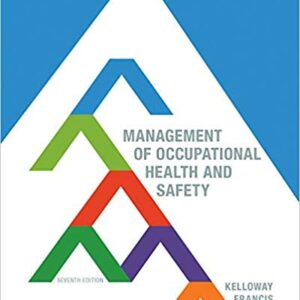

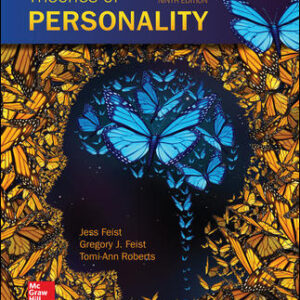

Reviews
There are no reviews yet.